Last Chance to Catch NYC's Holiday Notalgia Train
We met the voices of the NYC subway on our nostalgia ride this weekend!


90 Sands Street, the former Jehovah’s Witness Dormitory, towers over its neighbors in Dumbo, Brooklyn alongside the Manhattan Bridge. The Jehovah’s Witness properties, which extended between Brooklyn Heights and Dumbo, have been parceled out over the last few years. The largest tract was transformed into the mixed-use campus Panorama which opened earlier this year. 90 Sands Street is unique however, as it is being redeveloped by the supportive housing provider, Breaking Ground. Closed since 2017, 90 Sands is very much frozen in time with ’90s era wallpaper and decor throughout. We were recently taken on a truly fascinating tour inside the 30-story building, from the basement levels all the way up to the observation deck which offers nearly 360 degree views of Manhattan and Brooklyn.
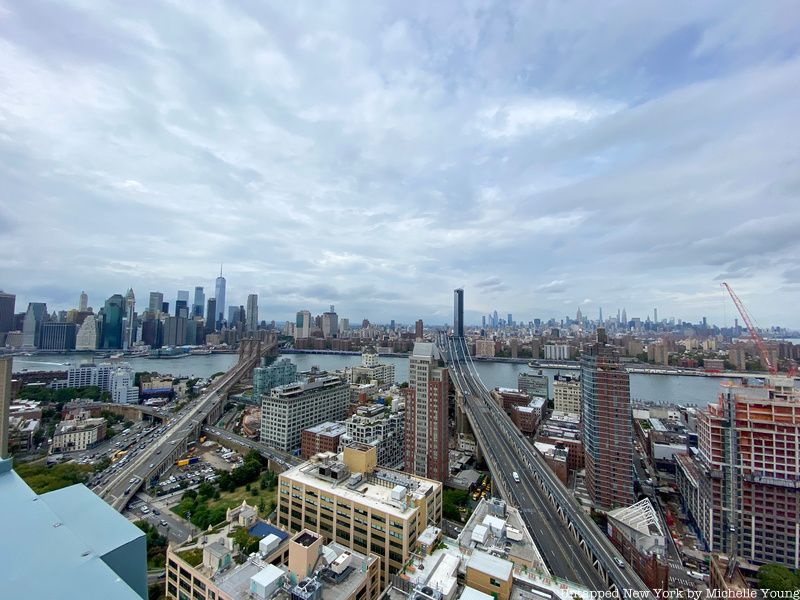 The view from the observatory at 90 Sands Street
The view from the observatory at 90 Sands Street
When the renovation is complete, 90 Sands will have 491 supported housing units, which help New Yorkers transition out of homelessness. According to Breaking Ground, supportive housing is “affordable housing paired with onsite supportive services designed to help people get and stay on the path to long-term stability. Social services, medical and psychiatric care, and recreational and educational activities help people recover from homelessness and build community.”
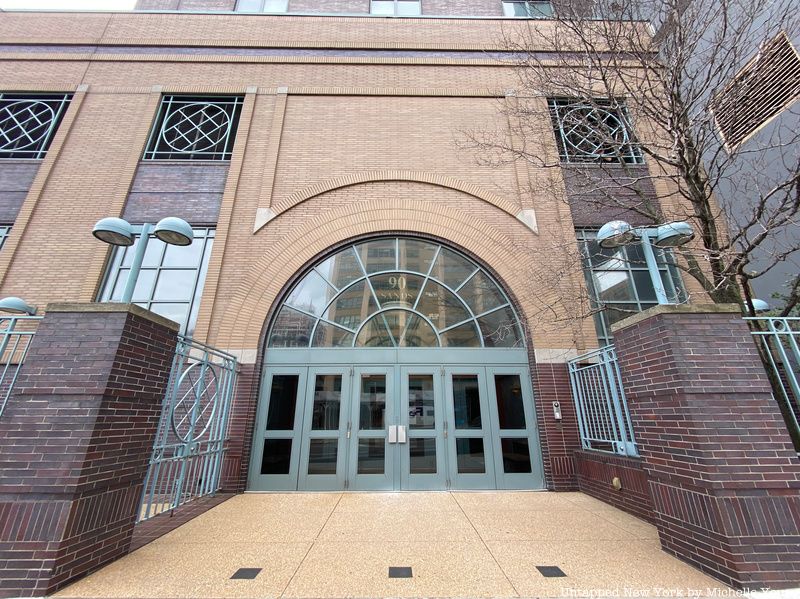
Entrance to 90 Sands
90 Sands was previously run as a residential hotel or dormitory by the Watchtower Bible and Tract Society, the legal not-for-profit entity used by the Jehovah’s Witnesses for the dissemination and operations of the religious group. The Jehovah’s Witnesses purchased the property at 90 Sands Street in 1986 and constructed the building in 1992 to house 1,000 of its Bethelites in long-term residential housing. It remained in operation as per its original purpose until 2017.
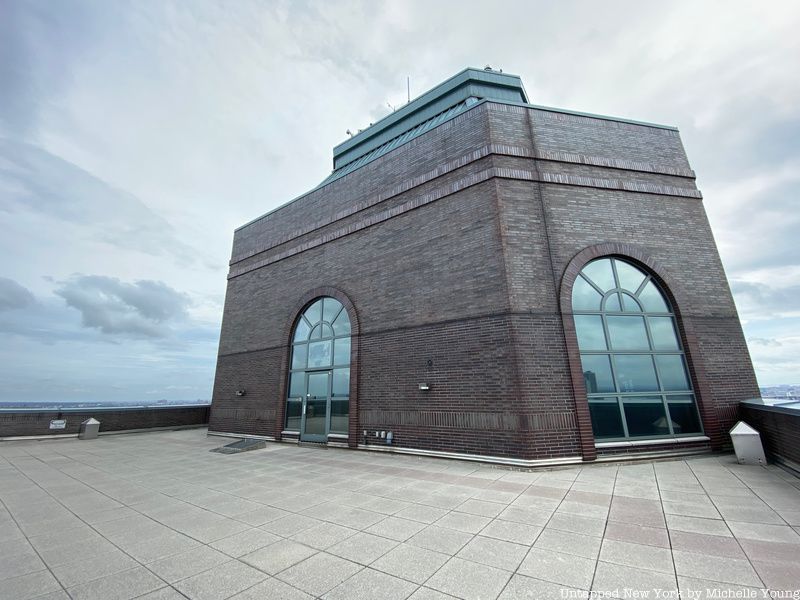
One of the rooftop observation decks at 90 Sands
Breaking Ground was fortunate to see the building before it was publicly listed for sale and realized it was “perfect for supported housing,” says Patrick Bonck, Director of Communications at Breaking Ground who gave us the tour. Breaking Ground was founded in the early 1990s, making its name converting two historic Manhattan hotels into affordable and supportive housing: The Prince George Hotel with 415 units and the Times Square Residence with 650 units.
A building that is 100% dedicated to affordable and supportive housing is a pretty rare feat in New York and requires a concerted public-private-non-profit partnership. To acquire 90 Sands in 2018, Breaking Ground received $2 million from New York City Council, a $155 million loan from NYC Department of Housing Preservation and Development (HPD), a $10
million grant from Enterprise Community Partners, Inc., and a $6.7 million sponsor loan along with a transfer of air rights from the Prince George Hotel project.
A 2015 revision of the Voluntary Inclusionary Housing Program (VIHP) included the preservation of affordable housing units and allowed for the transfer of air rights to finance upgrades and modernization of a building to transform it into affordable housing or to use the mechanism to acquire land or existing structures to develop new supportive and affordable units anywhere within New York City.
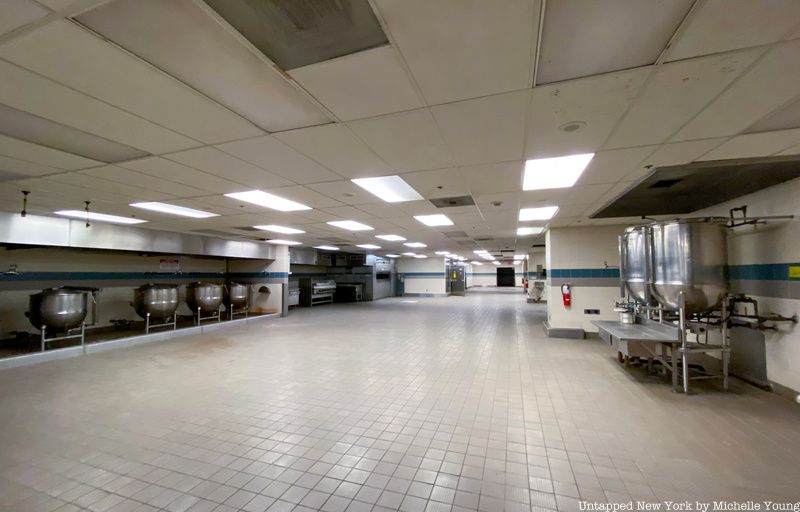
The commercial kitchen in the cellar that once fed 1,000 people multiple times a day. On the right are commercial sized coffee urns.
When complete, 90 Sands will be Breaking Ground’s largest building by square footage, though not with the largest number of units. Instead, there will be two basement levels with 30,000 square feet total dedicated to community space and a 7,500 square foot outdoor plaza that will be reopened to the public that can accommodate community and commercial space.
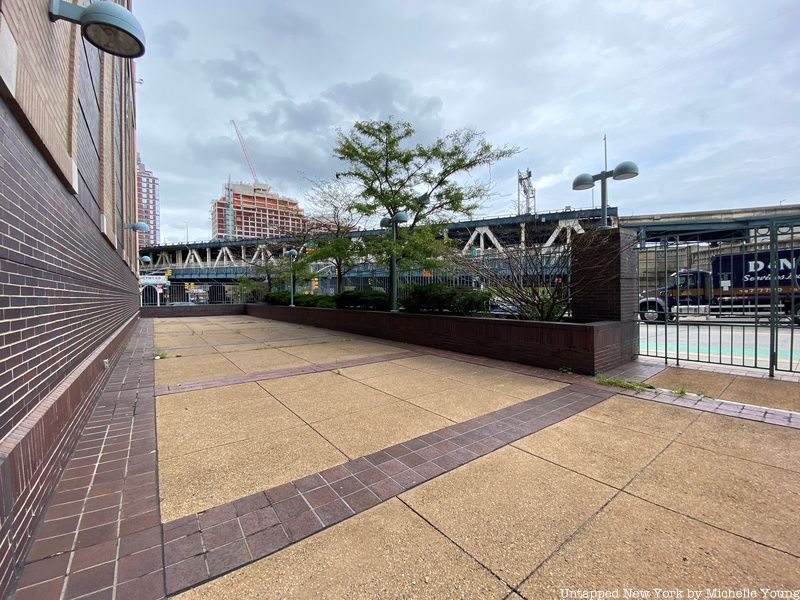
The outdoor plaza will be completely redesigned to accommodate commercial space and be open to the public
The second level cellar has a giant commercial kitchen that once fed multiple meals a day to the thousand residents and is still in great condition for the next potential tenants. “You don’t find vast commercial kitchens like this too much in New York City. It’s already built out and you wouldn’t have to do a lot of work…So maybe a culinary arts program. We’re thinking along those lines and looking for partners,” Bonck says.
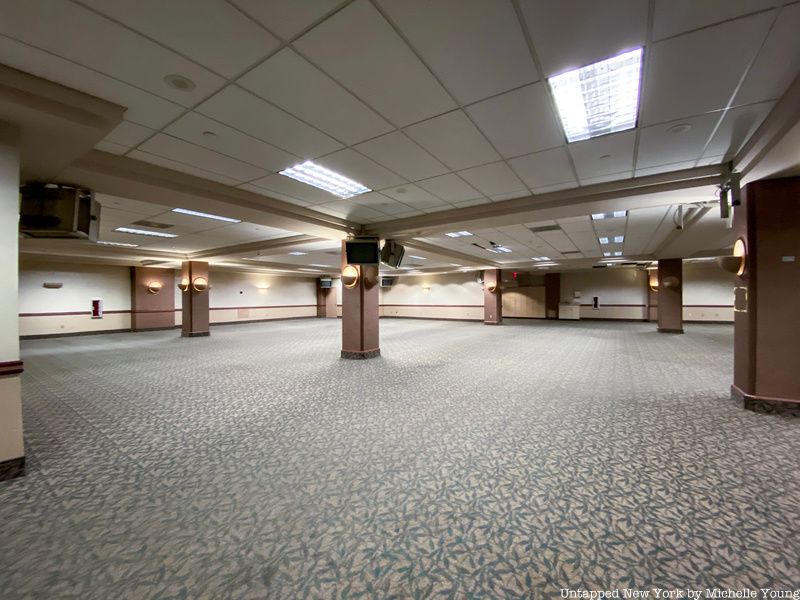
One of the former dining rooms in 90 Sands
The other spaces in the cellar levels were originally used as dining rooms and you can still see the multiple televisions that likely showed Jehovah Witness-produced videos to those dining. Breaking Ground imagines that these dining rooms will be broken up into office space and other types of spaces for a community group, as well as offices for the building’s property management team and the social service partner.
Since 2018, Breaking Ground has been going through a rezoning amendment process with the City of New York for 90 Sands, which took 18 months. The approvals came in May 2020 and since then Breaking Ground has been working with the Department of Buildings to determine how many units can be created from the existing 500 rooms. The result is 491 spacious units with one superintendent apartment. 309 units will be for the homeless and 191 units for families or individuals at anticipated income bands of 30%, 40%, 80% and 100% of Area Median Income (AMI).
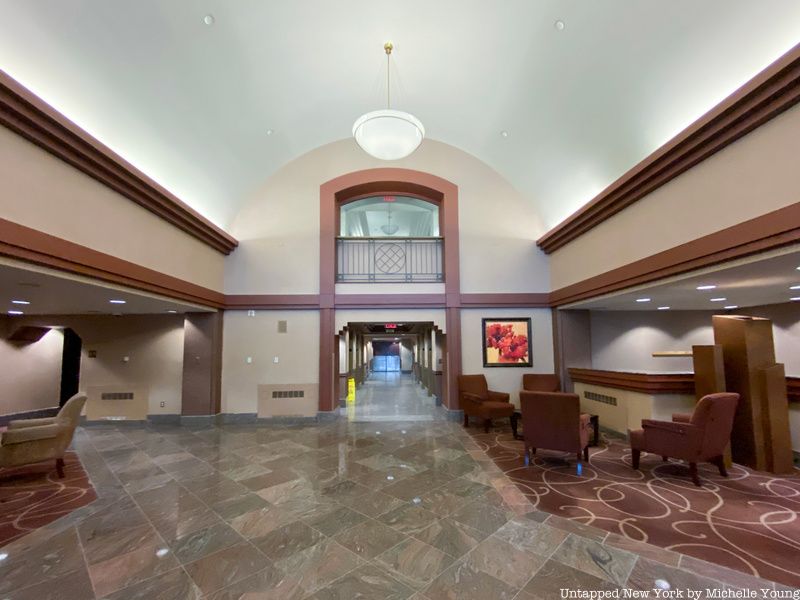
On our visit to 90 Sands, we were also able to see the original lobby, designed in a very ’90s-esque vibe with tiled and carpeted floors and a pale pink and mauve palette. There are six elevator banks with brass style buttons.
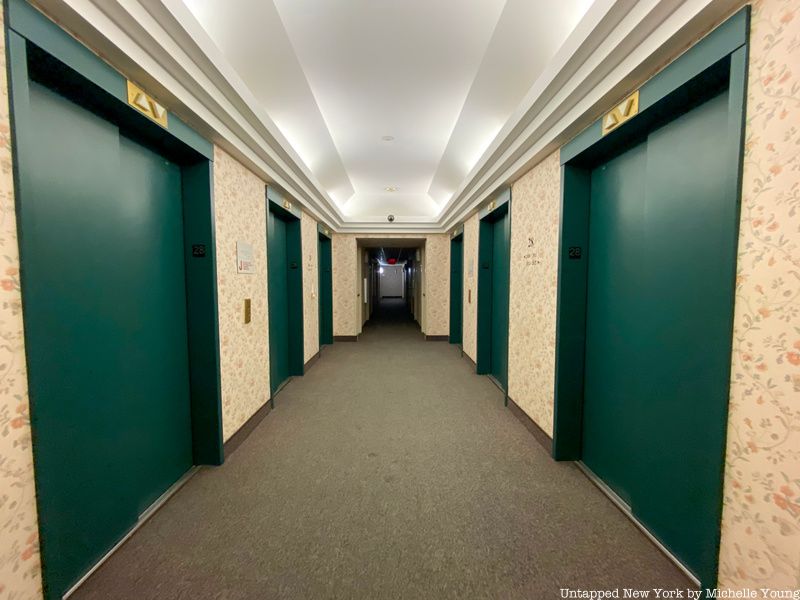
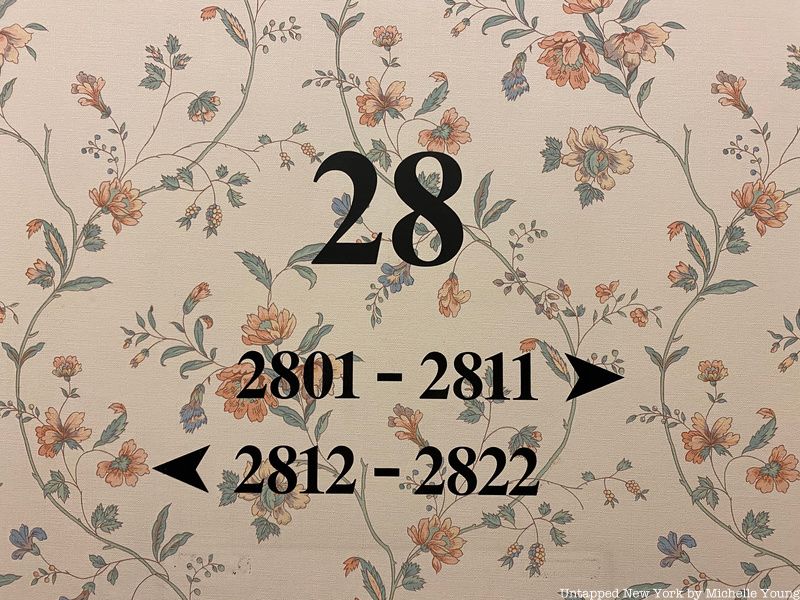
On the upper floors, the hallways are lined with floral wallpaper that differs on each floor. We saw two residential units, which were set up as model rooms from when the building was going to be sold as a hotel, as well as one that had already gone through demolition. The construction quality is noticeably high and as Bonck describes, “you can see [the Jehovah’s Witnesses] didn’t spared any expense” in the original construction, “They really built it to a high standard and really kept it very nice.” The quadruple pane windows have built-in blinds between the panes.
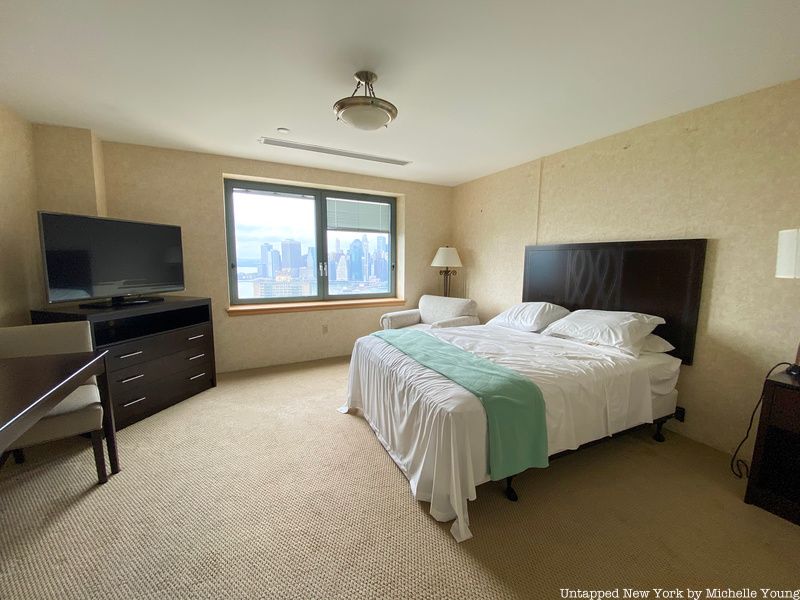
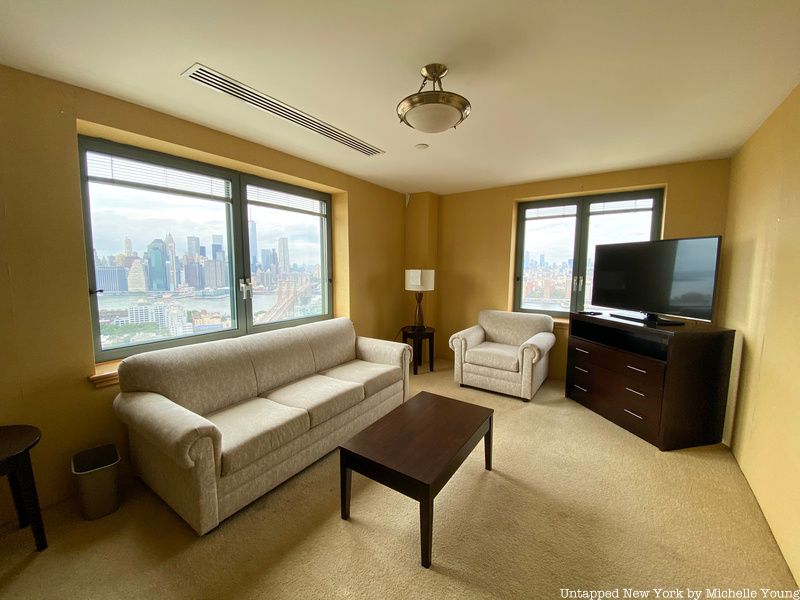
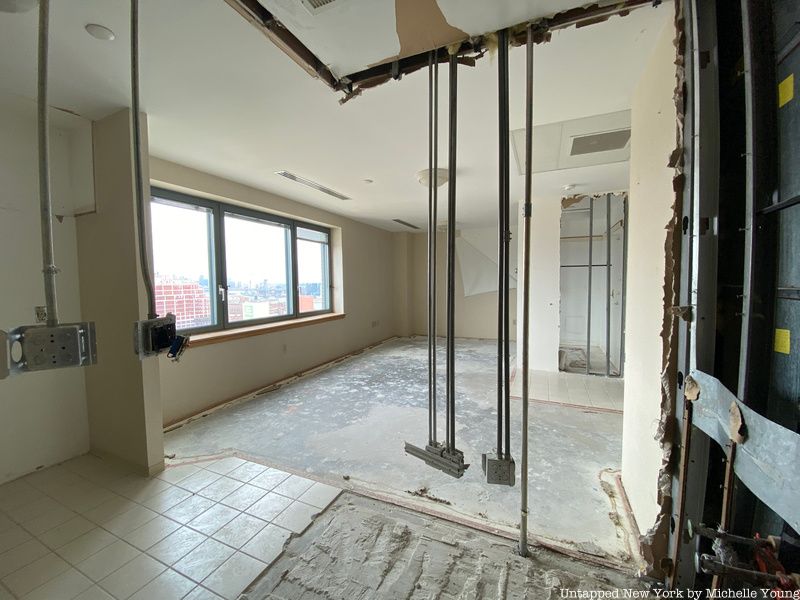
A unit that has already undergone demolition
The gem of the building is the observation deck, which includes the former library of the building, event spaces, and two expansive terraces around the central core. The library still has the built-in wooden bookshelves, which are seem practically new. The event spaces are set up with neatly lined blue chairs and tables, as if an event will be taking place shortly. Breaking Ground imagines that they might combine some of the discrete spaces and turn it into a multi-purpose event space to be used by non-profit organizations and foundations. If it’s possible, they’ll also try to create a green space on the roof.
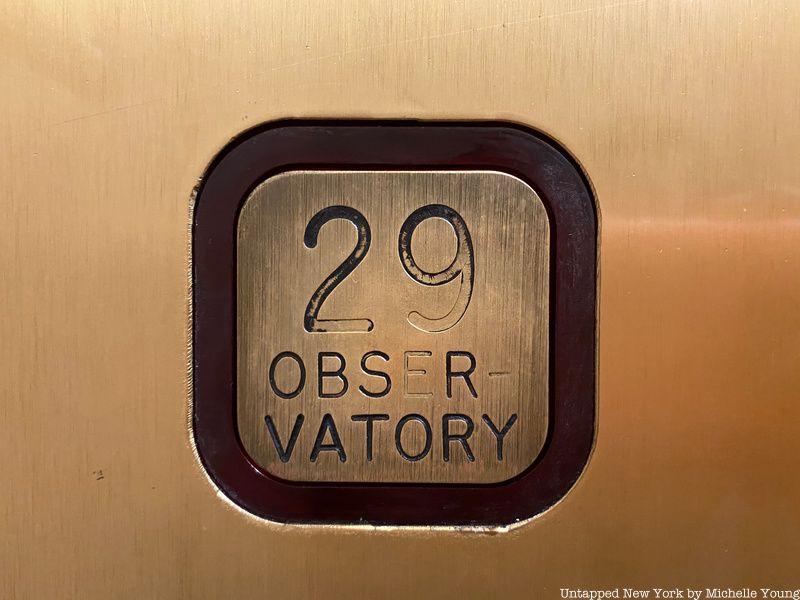
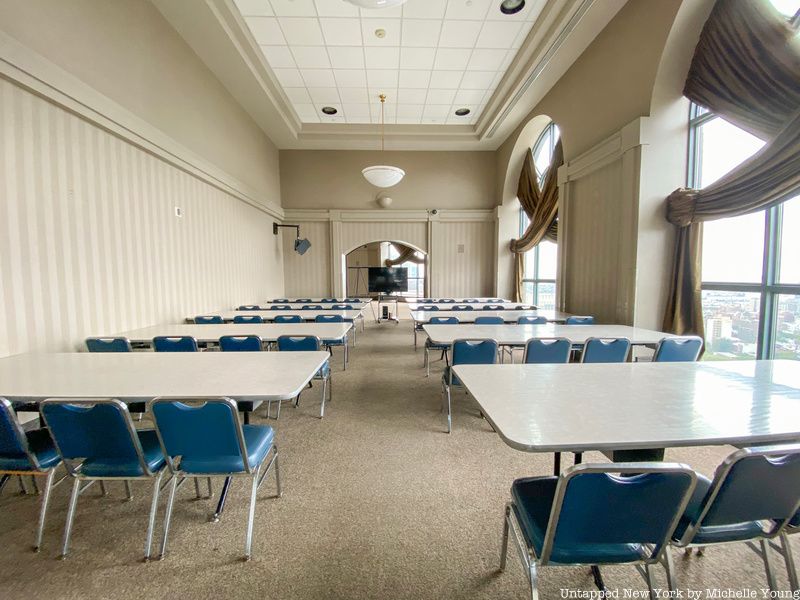
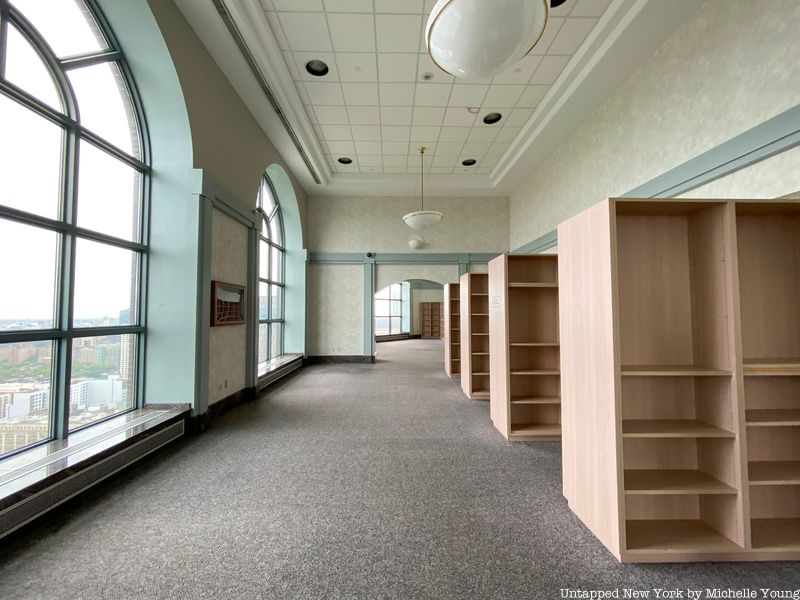
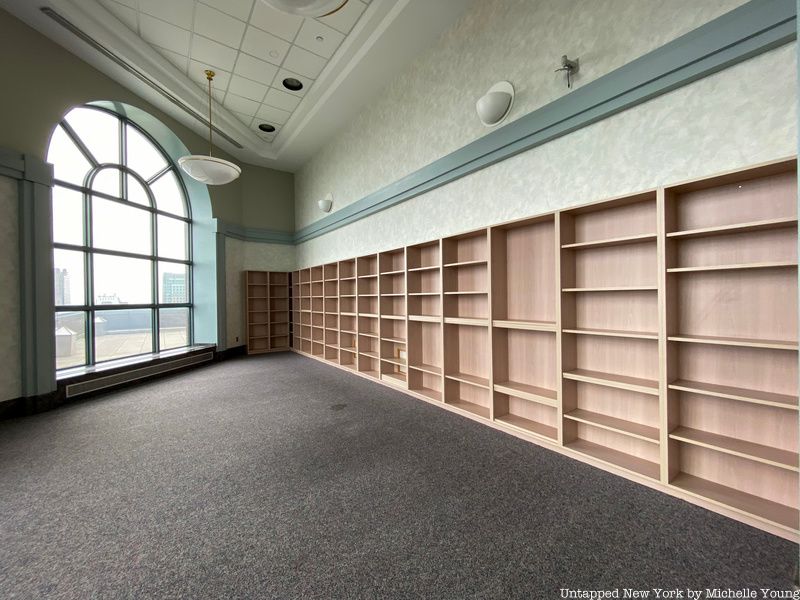
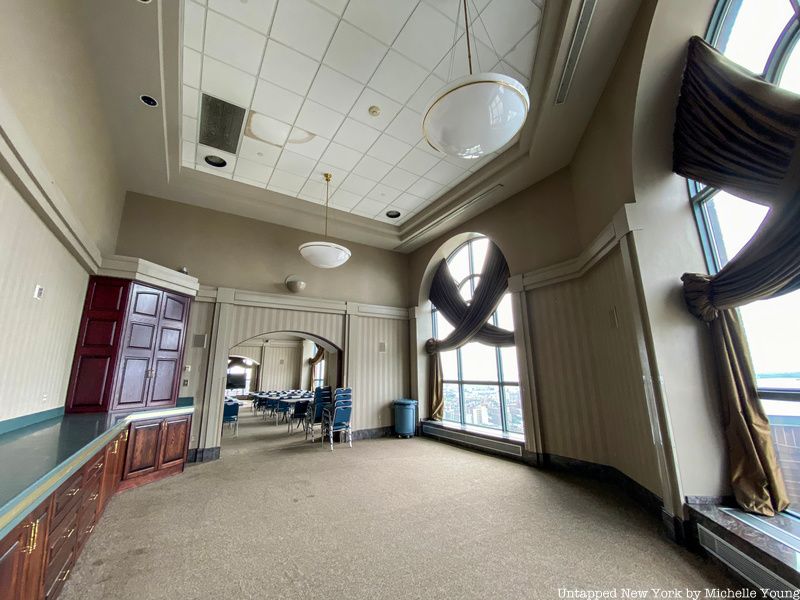
Breaking Ground should be able to close on a construction loan at the end of October and work will begin after that. The goal, Bonck says, is to complete construction in 18 months. Reflecting, Bonck says, “We’re very very fortunate to be working on [90 Sands] and to have acquired it. Especially [because] we’re going to give 300 people who are exiting homelessness, who used to live on the street [a place to live].”
Join us for a very special tour inside 90 Sands Street for Untapped New York Insiders:
[post_featured_tour]
Subscribe to our newsletter